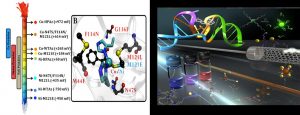The University of Illinois, Urbana-Champaign
Department of Chemistry and Biochemistry and Department of Biological Sciences
November 3rd, 2017 – Fall Seminar
Time and Location: Noon in Meyerhoff Chemistry, Room 120
Host: Dr. Aaron Smith
Metalloenzymes play important roles in numerous biological processes. Designing metalloenzymes is an ultimate test of our knowledge about metalloenzymes and can result in new biocatalysts for practical applications such as in alternatives energies. We have been focusing ways to design heteronuclear metalloenzymes involved in multiple electron redox processes, such as heme-copper oxidase, heme-non-hem iron nitric oxide reductase and heme-[4Fe4S] cluster sulfite reductase. In the process, we demonstrate, while reproducing the primary coordination sphere may be good enough to make structural models of metalloproteins, careful design of the non-covalent secondary coordination sphere interactions, such as hydrophobicity and hydrogen bonding interactions, including those involving waters, are required to create functional metalloenzymes with high activity and turnover numbers comparable to those of native enzymes.
(Click figure to enlarge)
While metalloproteins have been the major focus of metalloenzyme research for decades, metallo-DNAzymes, DNA molecules containing metal ions at the active site and displaying enzymatic activities, have emerged as a new class of metalloenzymes. We have been using in vitro selection to obtain from a large DNA library DNAzymes that are specific for metal ions and use spectroscopic methods to elucidate how and why DNAzymes can recognize metal ions selectively. We have also converted these DNAzymes into highly sensitive and selective sensors for metal ions, including those metal ions that are difficult to design using other methods, and demonstrated their applications in environmental monitoring, food safety, and medical diagnostics. The use of these metal-DNAzymes for imaging metal ions in living cells has also been demonstrated.
